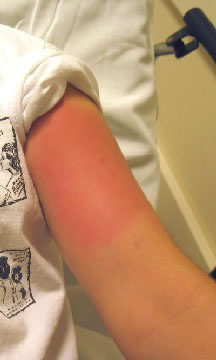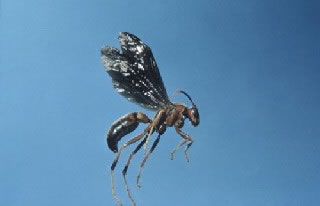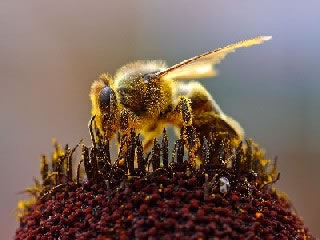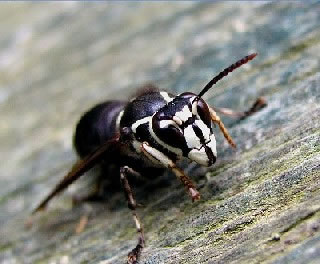Photos

Bee Sting of Upper Arm
This photo shows a localized reaction to a bee sting. There is mild redness in an oval 4 inches (10 cm) wide of the left upper arm.
Source: Self Care Decisions, LLC
Used with Permission from Schmitt Pediatric Guidelines LLC.

Wasp
Source: CDC PHIL
From the CDC's Public Health Image Library (http://phil.cdc.gov), ID#5450, in the public domain.

Honeybee Collecting Pollen
Source: Wikimedia Commons
Permission is granted to copy, distribute and/or modify this document under the terms of the GNU Free Documentation License. This is a public domain image file from Wikimedia Commons. Wikimedia is a freely licensed media repository.

Paper Wasp
A paper wasp in its nest.
Source: Wikimedia Commons
This work is licensed under a Creative Commons Attribution 3.0 License. Wikimedia Commons. Photographer: Alvesgaspar.

Hornet
Bald-faced hornet
Source: Wikimedia Commons
Permission is granted to copy, distribute and/or modify this document under the terms of the GNU Free Documentation License. This is a public domain image file from Wikimedia Commons. Wikimedia is a freely licensed media repository.

FIRST AID Advice - Bee Sting - How to Remove a Stinger
The stinger looks like a tiny black dot in the center of the sting. There are many different methods of removal. Removing the stinger quickly is more important than the method of removal used.
- You can scrape it out with a credit card or finger nail.
- You can also use adhesive tape.
- If only a small fragment remains, don't worry about it. It will shed with the skin.
Special Notes:
- In many cases no stinger will be present.
- Only bees leave their stingers. Wasps, yellow jackets and hornets do not.
Source: Self Care Decisions, LLC
Used with Permission from Schmitt Pediatric Guidelines LLC.